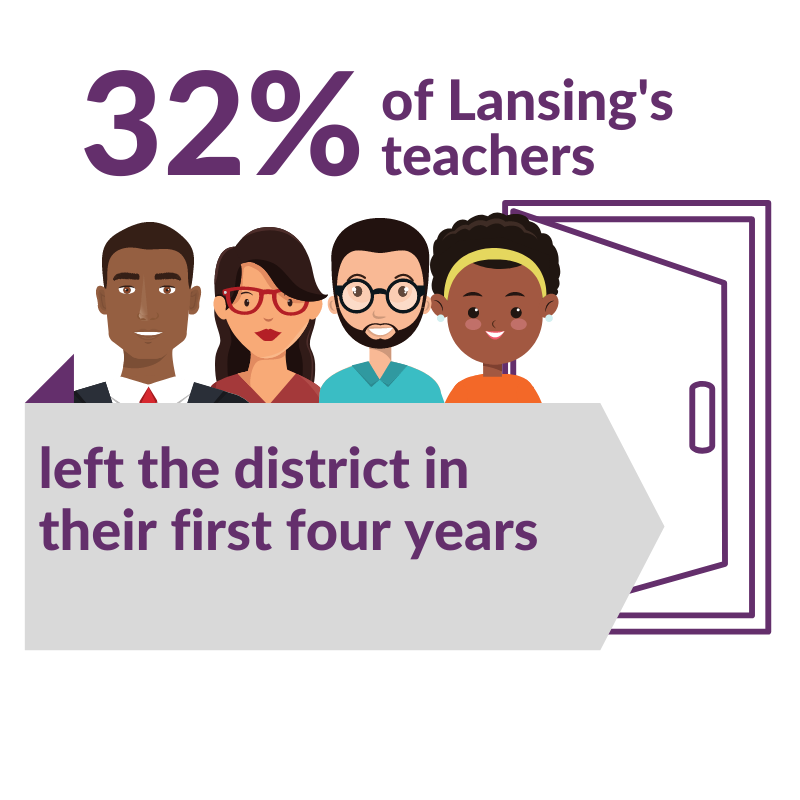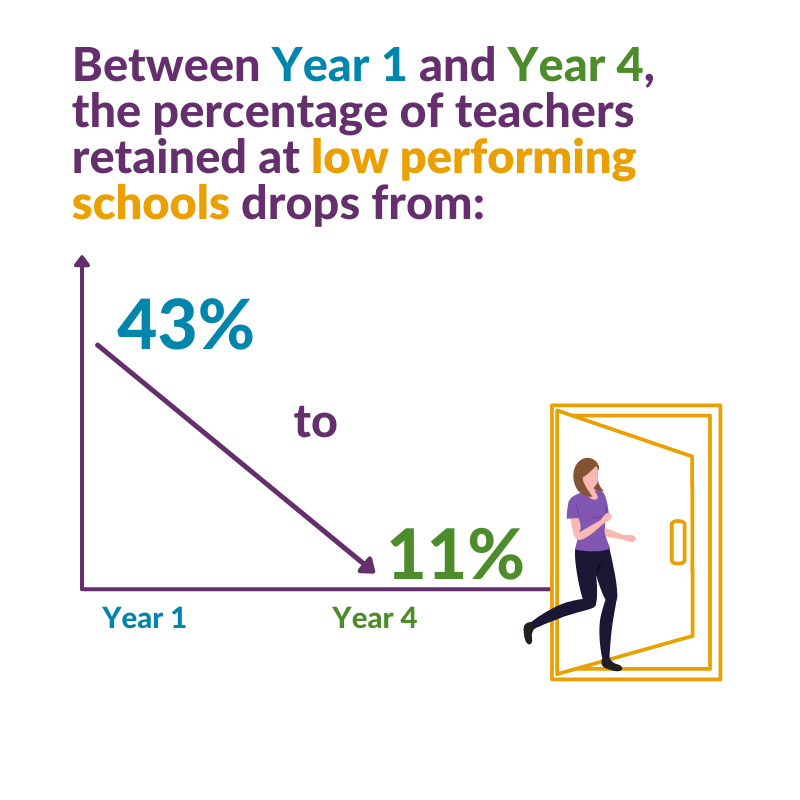Addressing Recruitment and Retention Challenges in Lansing, MI
A comprehensive approach to addressing the root causes of teacher shortage
Featured Tool
Use this user-friendly, Excel-based tool to visualize teacher workforce data across the full educator career continuum, including disaggregating teacher workforce data to identify teacher shortages by segments like subject area, school type, income level, geographic area, and race or ethnicity.
Client
Lansing Public Schools, Regional Educational Laboratory (REL) Midwest
Project
Teachers, principals, coaches, and district representatives convened during three sessions to engage in an inquiry process to identify the issues that drive recruitment and retention challenges, and the strategies that can address these challenges.
Outcome
Stakeholder-designed and data-driven action plan to improve recruitment and retention of the educator workforce through evaluation for professional improvement and principal leadership
Partners
Lansing Public Schools
The Challenge
In Lansing, Michigan, 32% of the district's teacher left the district within their first four years--a challenge even more pronounced in low-performing schools. Between year 1 and year 4, the percentage of teachers retained at low-performing schools drops from 43% to 11%. Lansing Public Schools and the Regional Educational Laboratory (REL) Midwest requested support in reducing teacher shortages within the district.
The Opportunity
To examine and mitigate teacher shortages in Lansing, the Center on Great Teachers and Leaders (GTL Center) provided a process to both analyze and address shortages through a comprehensive analysis of all aspects of the educator talent continuum, as reflected in GTL Center's Talent Development Framework (TDF). In December 2019, REL Midwest engaged Lansing in a robust inquiry, planning, and implementation process to achieve results related to teacher recruitment and retention challenges. The process consisted of three coaching sessions during 2020. The following diagram depicts this process:


The Approach
Session #1: Analyze Data
The team examined a range of teacher workforce data using GTL Center’s Talent Development Framework Data Tool. Using the tool and other sources, small breakout groups generated a series of findings. From there, the group identified four key problem statements on which to focus moving forward.
Session #2: Identify Root Causes
A root cause analysis is a systematic process for identifying the deepest underlying cause or causes of a problem. Addressing the root causes, rather than addressing obvious symptoms, enables stakeholders to permanently address a challenge. The team chose two cause categories on which to focus, identifying six unique root causes of Lansing's teacher shortage.
Session #3: Selected Strategies for Educator Shortage Root Causes
The six unique root causes of Lansing’s teacher shortage required targeted strategies to address the problems. REL Midwest researchers scanned national databases and consulted with experts to find a series of strategy examples. The group decided that evaluation for professional improvement and principal leadership are the key strategies that best address the identified root causes. The intended outcomes include encouraging personnel to feel empowered to engage in honest dialogue about strengths and opportunities to grow.
The goal is to help teachers grow in order to help students learn what they are most in need of and retaining teachers in order to get them to a level that accomplishes that goal for students. This includes transparency about the evaluation process with teachers trusting that they are a part of the process.
Session #4: READI framework
The team explored the key questions of the READI Framework as they consider how to design programs and related supports for success in the highest need schools. While the team identified the most important beneficiaries of the reformed evaluation program as students in schools with low teacher retention rates, schools where teachers indicate they don’t feel supported by leadership, and schools with teachers who have low effectiveness scores, in reality these schools may not be the actual recipients.
After applying the READI Framework, the group identified 13 causes that could prevent the reformed evaluation program from reaching the highest need schools, and brainstormed program design features to help address those causes in advance.
The Outcomes
Related Pages




